
This is no accident. This is a deliberate design decision.
It’s the same reason why fast food logos are often warm reds, yellows, and orange tones. These colours jump out at us. They create a sense of excitement and urgency.
In his book Drunk Tank Pink, Dr Adam Alter argues colour is a hidden force in our lives that can shape the way we think, feel, and behave.
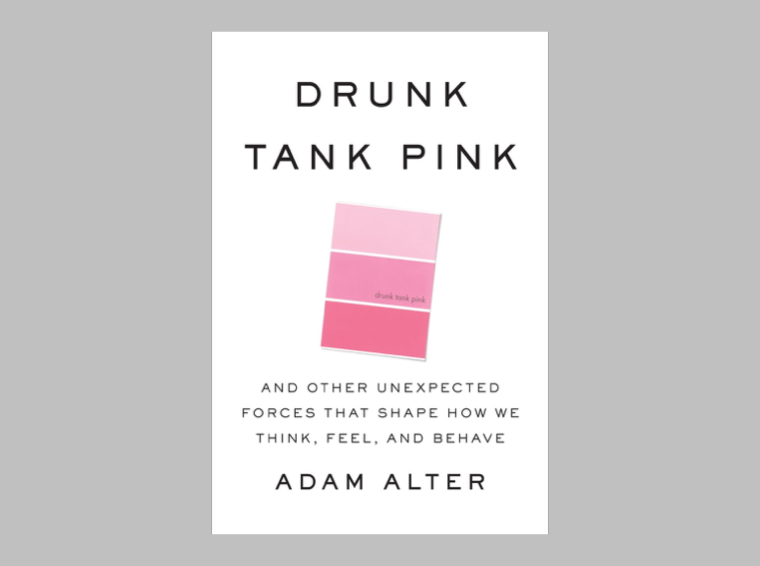
In this blog, I’m going to explore how you can use colour as a tool to help you study more effectively and keep your brain focused and engaged on the task at hand.
There is whole field of research dedicated to exploring the impact of different colours.
One fascinating study looked at the impact of a particular tone of pink (Baker-Miller Pink/Drunk Tank Pink) that appeared to sap people of their energy. Researcher Dr Alexander Schauss found staring at this shade of pink could lower people’s heart rate and pulse compared to staring at other colours.
A 7-month trial was conducted in which prison confinement cells were painted in this pink shade. According to Dr Schauss, when people were exposed for just 15 minutes to this pink colour in their prison cell, it made them more relaxed, less aggressive, and reduced the incidence of violent behaviour.
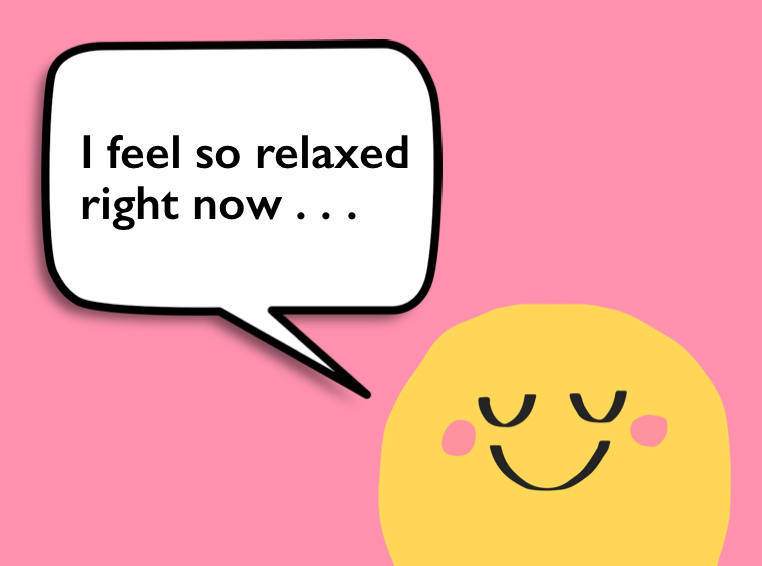
But before you race off to the hardware store to buy a tin of pink paint, you need to understand a few simple things about the psychology of colour.
The research suggests that colour can act as a powerful trigger. It can cue different emotions, thoughts, and behaviours. For instance, when you see a red Stop Sign or light, this captures your attention.
But how we react to colour also comes down to personal preference and particular contexts. Colour can have different meanings in different contexts (e.g., on Valentine’s Day red generally symbolises romance rather than “Danger! Look out!”).
The bottom line is this: when it comes to colour you need to experiment to see what works for you.
Colour can evoke particular states (e.g., a state of calm or alertness). It can also perk up your brain and transform a dry, boring subject into something that’s a little bit more novel and interesting for your brain.
Below I share 9 ways you can use colour to study and work more effectively.
There’s something about a brightly coloured post-it note that captures our attention. This is why I love using post-it notes to help focus my mind and stay on track.
On a post-it note, I create a list of no more than three things that I need to do. Once I’ve completed those tasks, I scrunch up the post-it and throw it in the bin. This action feels surprisingly satisfying! I’ll then grab a fresh post-it note (often in a different colour) to create a new list.
If I’m not sure how to get started with a task (e.g., Task: Write blog post on colour), I’ll grab another post-it note and I’ll scribble down the first tiny action I can take to kick-start the process (e.g., Tiny action: Open Word document).
If you have trouble finding your study materials for each subject and they all look the same or are scattered all over the house, you can use colour to make it easier for you to find what you need.
Try assigning a particular colour to a subject. This makes it easier to stay organised and identify your materials. At home, I assign a light blue to my exercise files and folders. When it’s time to plan my workout for the day, I look for my light blue files and folders.
A simple and cheap way to colour code your materials without investing in brand new stationery is to gather a collection of paint swatches from your local hardware store. You can repurpose these as labels by cutting them into smaller sections and sticking them on your files, notebooks, etc.
Testing yourself with flashcards is a highly effective way to study for a test and/or exam. You can create your own flashcard decks by purchasing index cards in a range of different colours.
Try assigning certain colours to different subjects. Alternatively, you can simply pick a colour you want to work with depending on how you feel.
There are no hard and fast rules. Feel free to mix up your flashcard colours to keep things fresh for your brain.

Creating a mind map on a topic is a simple way to combat study fatigue and inject a little colour and creativity into your study sessions.
Although using different coloured pens isn’t absolutely essential for mind mapping, it’s well worth doing. I use different colours to create the different branches on my mind maps.
I have dozens of colourful mind maps at home. Despite my lack of drawing skills, these mind maps look great and are fun to review primarily due to the different coloured branches.
It’s important that you feel good in your study environment. If you feel good in your study space, you’re more likely to sit down and study there.
I’ve decorated my workspace by putting up colourful posters, inspiring and funny pictures, and artwork on my walls.
If you don’t have access to artwork/posters, you can print out colourful pictures and quotes of things that make you feel good. The addition of a few indoor plants can also help to liven up your space as well as purify the air.
Fluorescent highlighters feel really good to use. It can feel both fun and satisfying to strike things off your to-do list. You can also use these pens to time block different tasks/events in your diary and draw your attention to important tasks that you need to do.
Word of warning: When it comes to studying for a test or exam, I don’t recommend highlighting your books and/or notes as a way to learn. I know it feels good but research shows it’s an ineffective way to learn.
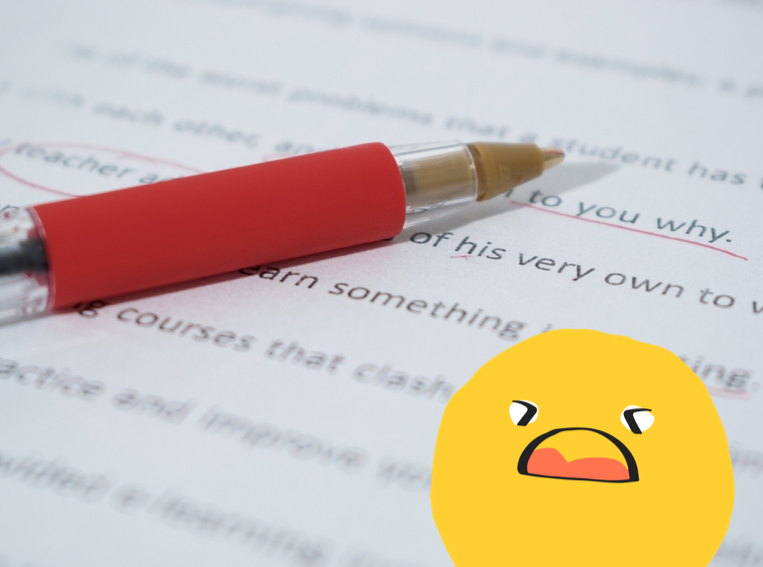
Red pen is often associated with failure and criticism. This is why seeing a teacher’s comments scribbled in red pen can trigger negative emotions in many of us.
Generally, we don’t like reading comments written by others in red pen. It feels nasty! But it turns out if you use a red pen to correct your own work, this can help you to pick up more errors.
Dr Adam Alter discusses one study that looked at the difference between using a blue pen and a red pen to correct an essay. Students who used a blue pen picked up on average 19 errors. In contrast, students using a red pen picked up an average of 24 errors.
But using a red pen has its limitations! If you are trying to solve a problem or taking a test, using a red pen can backfire by activating ‘avoidance motivation’. This is a distracting state of mind that can impair a student’s ability to solve problems and increase stress levels.
As a rule of thumb, use a blue or black pen when solving problems and taking tests. But when you need to cast a more critical eye on your work (e.g., in the proofreading phase), switch to using a red pen.
A lot of us use our phones as an easy way to escape from the boredom and discomfort we experience when doing our work. The apps on our phones are like candy. They are designed to be highly addictive and hijack our attention.
This is where you can be strategic with how you use colour: you can make your phone look more like a tool (and less like a toy) by turning on greyscale mode.
Viewing your phone in greyscale is a completely different experience to using it in full-colour mode. As a year 8 student recently shared with me:
“When I made my phone greyscale, it made it really boring to use.”
Try it and see for yourself!
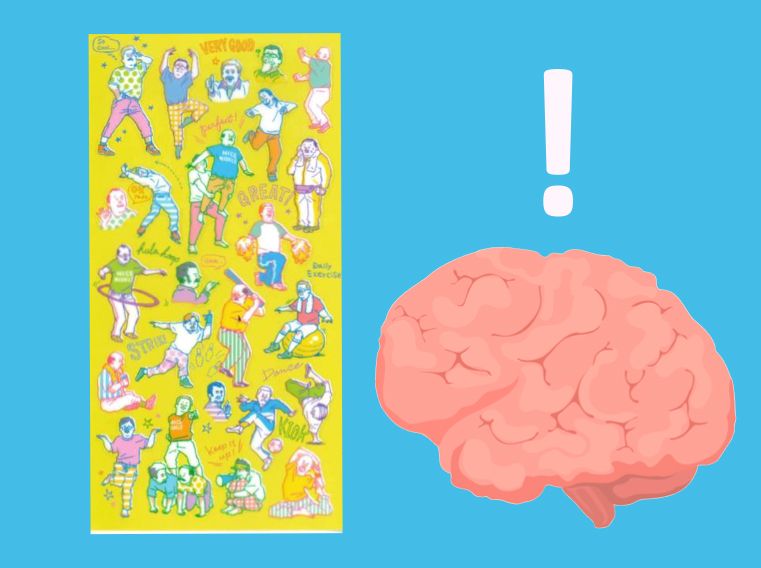
This strategy may seem juvenile. If it reminds you of being back in primary school and receiving gold stars, hear me out.
Too often we don’t stop to acknowledge and appreciate ourselves for accomplishing tasks. We finish one thing and we immediately shift our focus to the next task on our to-do list.
When you work this way, your work routine can quickly become soul destroying and your motivation can take a dive.
This is why every so often I pull out my fun stamps and colourful sheets of stickers. After completing a task, I pause and acknowledge what I’ve done by giving myself a stamp or a fun sticker. It’s a little celebration.
For some reason, my brain responds particularly well to quirky Japanese stickers featuring ogisan (Japanese grandfathers) exercising. We’re all different, so explore what stamps and stickers work for you.
Colours are lot of fun! Incorporating a little more colour into your studies and work life can take things to the next level and perk up your brain when it needs a little motivational boost.
But the colours that I like may not be the colours that you like. Your colour preferences may also vary from day to day. Notice the colours that make you feel good and have fun seeing how you can incorporate them into your study sessions.
Share This:
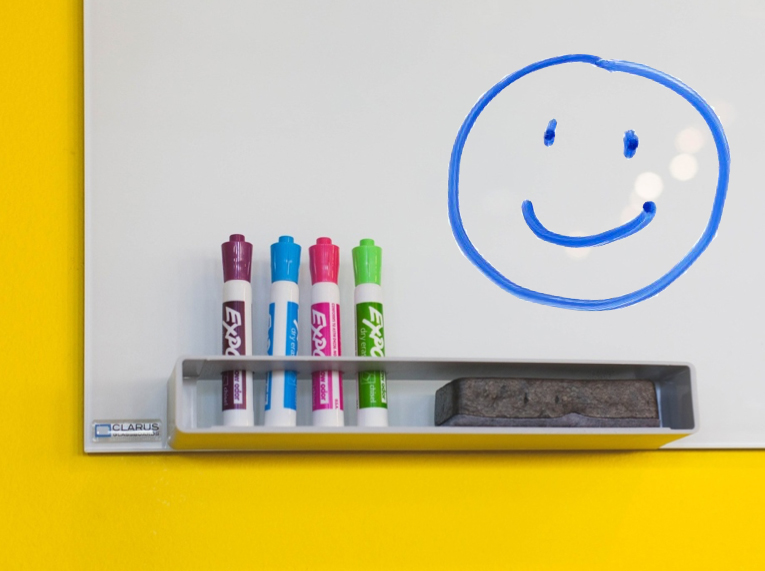
Take a tour of my home and you’ll see whiteboards in my office, dining room, bedroom and kitchen.
These whiteboards, covered in scribbled text and bad drawings, make my house look a little quirky. But upon closer inspection, you’ll see that these whiteboards help me to work my way through the chaos and confusion of life.
Here are a few ideas on how you can use a whiteboard to make life a little easier for yourself:
If you’re a perfectionist like myself, a large whiteboard is a great tool to decrease anxiety and overwhelm surrounding big projects.
Afraid of making a mistake? Stress less!
With one swipe of a cloth, you can wipe away any ideas you don’t like. So don’t hold back. Make a mess. Make a start.
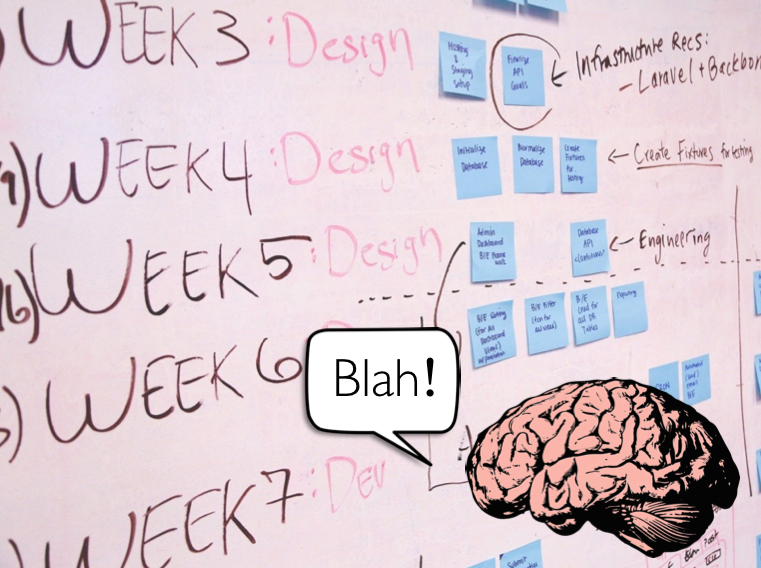
Have a lot going on in your life? I know this feeling all too well.
Most of us go through the day with lots of random thoughts swirling inside our heads. Unless we capture these thoughts, they can take up precious mental space and deplete our brainpower.
When I’m feeling overwhelmed, in order to reset and feel more in control, I stand up, head over to the closest whiteboard and I spend a few minutes scribbling out all the things that are on my mind. These things usually include:
• People to call and/or email
• Deadlines for projects
• Conversations to have with people
• Ideas for future projects
• Little irritants (things that are bugging me)
• Things I need to buy (usually food)
There’s something really powerful about getting your thoughts out of your head and onto a whiteboard. Try it and see how you feel after a brain dump session.
How can a whiteboard help you ace your exams?
Two words: active recall.
According to cognitive psychology, active recall (also known as retrieval practice) is the number one way to retain information. Research shows it’s a much more effective way to study than rereading your books or highlighting your notes.
Here’s how you can do a quick active recall session with a whiteboard:
1. Grab your whiteboard markers and a copy of your syllabus.
2. Flip straight to the unit content section.
3. Now choose a syllabus point.
4. Set a timer for 5 minutes.
5. Without looking at your notes or books, write and/or draw as much as you can remember on that syllabus point.
6. When the timer goes off, check to see how much you recalled correctly and where the gaps in your knowledge are.
7. Got something wrong or missed an important bit of information? Grab a different coloured pen and write that stuff down.
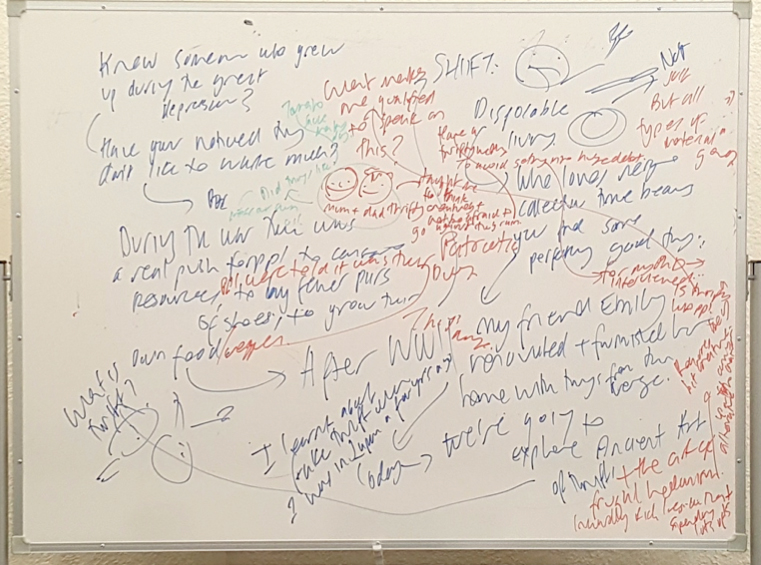
If you need to learn a presentation in a short period of time, I highly recommend doing active recall on a whiteboard.
This is how I learn all my presentations in a short period of time. I set a timer for 25 minutes and do an active recall session (I can’t stop until the timer goes off).
These sessions don’t look pretty (see example above) but it doesn’t matter. What matters is the process of seeing how the content flows, bringing the information to mind and identifying the gaps in my knowledge.
Need to start working on a big project? Find yourself procrastinating? Use a whiteboard to break down that big scary projects into bite size chunks. Set a timer for 3-5 minutes and map out all the tasks that you need to do.
When the timer goes off, pick a different coloured pen and write down the first small action you can take to make a start.
If this task is still too scary for your brain, break it down again (write down an even smaller starter step). Continue breaking the task down until the task is so small that it’s not scary or overwhelming for your brain.
Create a simple to-do list on your whiteboard. After you complete each task, look at your whiteboard and strike a line through it, give it a tick or wipe it out (sometimes for a bit of fun I do all three). Then pick another item and get to work.
The aim is to get through as many items on your list as possible.
If you’re feeling stuck, you can use a whiteboard to work through the problem by deploying a simple strategy. Here’s what you do:
1. Grab two different coloured whiteboard markers.
2. Grab one marker and put yourself in the shoes of a kind friend. Imagining that you are this kind friend, write down a question to yourself. It could be something along the lines of, “What’s going on?” or “Why are you feeling stuck?”
3. With the other coloured pen, write your answer (this time as you, not as your kind friend).
4. Continue asking yourself questions and answering them (alternating between your different coloured pens). Keep doing this until you get some insights and clarity about what’s going on.
If you’re trying to establish a new habit, write the behaviour down on the whiteboard (e.g. “Do two push ups after I finish each study session”). Every time you do the behaviour give yourself a tick on the whiteboard. It’s motivating for your brain to see the ticks add up. This in turn makes you want to engage in the behaviour even more. Before you know it, you’ll be doing the behaviour without even thinking.
Now you might be wondering . . .
Of course you can use a big sheet of butcher’s paper to help you learn, plan and brainstorm.
But for me, big sheets of paper can be intimidating. Like a brand new notebook, who wants to mess it up? Not me!
But with whiteboards, you can breathe a sigh of relief. Because it really doesn’t matter if you make a mess. At the end of the day, you can take a photo of the whiteboard and wipe that mess away.
Whiteboards also allow for more movement in your day. Since you need to stand up and move around to use a whiteboard, you’re spending less time in a chair.
Research shows sitting for long periods of time is bad for your health. So the more time you can spend working on your feet, the better!
When it comes to whiteboards, bigger is generally better (up to a point). You need room to move and make a mess. You don’t want to cramp your style.
But if the whiteboard is too big, it’s going to be kind of clunky. It will take up a lot of space.
I recently purchased a large whiteboard that can attach to my wall. This is my favourite whiteboard as it’s the biggest and it doesn’t get in the way.
There’s no need to rush out and buy a stack of whiteboards.
I acquired most of my whiteboards slowly over time for free. Some were collected from university dumpsters, roadside verges, Gumtree and friends who relocated overseas.

But here’s a tip . . .
When I need a change of scenery, I head to my local library and use the whiteboard that’s located in the private study room.
Keep a look out for whiteboards in your school, university or local library. I guarantee, you’ll start to see them everywhere. Don’t be afraid to use them (whiteboards are there to be used).
If you come prepared with your own set of whiteboard markers and a cloth eraser, you can get a quick whiteboard session in. At the end of the session, take a step back and look at what you’ve managed to accomplish. Notice if your whiteboard sessions leaves you feeling slightly better than before (I usually feel calmer and more in control).
Then take a quick snap with your phone so you can capture your ideas . . . before wiping all that mess away.
“He who knows he has enough is rich.”
So I’ve been experimenting with this idea. I’ve been flexing my thrift muscle and making do with what I already have.
When I was working on my PhD, I discovered how to feel rich without having a lot.
I came across a simple graph that changed the way I viewed the world: The Wundt Curve of Satisfaction.
This graph illustrates the relationship between satisfaction and stimulation from consumption. Let me explain how it works . . .
When consumption levels are relatively low, the satisfaction experienced is quite high. But there’s this point at the top of the curve where you feel totally satisfied with what you have (the comfort zone). Let’s call this point the Enough Point.
But once you go beyond the Enough Point, the returns start to diminish. As you purchase your 27th pair of shoes, you feel satisfied for about 30 seconds and then you think ‘meh!’. You don’t feel as excited as you did when you purchased your first and second pair of shoes.
So up to a point more is more, but beyond the Enough Point, more is less.
Because we live in a culture that encourages us to spend up big.
Advertisers bombard us with messages that tell us if we want to be happy and successful we need to consume stuff. And lots of it.
The job of advertisers is to construct a world that makes us want stuff that we don’t need. They tap into our desire to have more.
Advertisers also create new needs that may not have existed in us until the ad came along. Have you ever picked up an IKEA catalogue and suddenly you felt the need to have a new piece of furniture or a brand new study space?
You felt good about your life just a minute ago. But now you’re feeling dissatisfied? What’s with that?
In short, advertising can seriously mess with our minds, our happiness and our Enough Point.
It turns out the secret to happiness is simple. And it’s free (or very cheap). If you want to know what it is, read on!
According to Dr Timothy Miller if you want to be happy and content, then you need to start wanting what you already have. In other words, you need to find your Enough Point.
Over the last few months, I’ve created several new thrifty habits around saving money and appreciating what I have.
The following habits have helped me to reconnect to my Enough Point:
I discovered a great new place to eat at. It’s called The Kitchen. My home kitchen!
With a lot of my work being cancelled due to COVID-19, I had the time and energy to cook. So cook I did!
My husband and I have only ordered takeaway two times in the past eight weeks (Thai and Indian). This is a big deal as we’d usually get takeaway at least once a week.
By eating at home, it gave our taste buds a chance to reset (research shows that it takes 10 days for your taste bud cells to repopulate). We now appreciate the flavours of fresh produce and our cravings for take away have significantly decreased.
Estimated savings: $350
My husband Peter has always enjoyed growing vegetables in his spare time. But he ramped things up when COVID-19 hit. Every spare moment he had, he would be out in the garden planting vegetables!
I have to say, our garden looks amazing. But the best thing has been all the wonderful chemical free, nutrient dense produce!
Peter does 99% of the hard work in the garden. It’s my job to provide emotional support (“Great job! Keep going Pete!”) and turn the produce into delicious meals.
Estimated savings: $500
Every time I throw away food, I imagine I’m throwing away my hard earned money. It’s a painful thought!
But when you throw away food, it’s not only food and money that you waste. You waste all the resources that went into producing the food in the first place.
So I created a fun game to not let any food in my fridge and pantry go to waste. I tried to see how creative I could be with my cooking by shopping from my pantry and using up what I had (thereby avoiding going to the shops for as long as possible).
The old apples on the counter became apple crumble. The dried kidney beans became a chilli bean dish. The ripe bananas were turned into muffins.
Estimated saving: $200
Instead of signing up to Netflix, we use Kanopy. This is a collection of movies and documentaries that you can access for free if you have a library card. My local library also offers a Click and Collect service, so I order new books and pick them up once a week.
Estimated savings: $150
I had developed a bad habit of going op shopping for clothes every week. My desire for clothing was insatiable. I was addicted to finding a bargain.
Sure, you could argue it was just a bit of fun. I was only spending $5-$20 each time (hardly a fortune, right?). But I was doing it every week. Some serious coin was starting to add up.
I knew I had a problem.
So one afternoon, I went through my closet (piece by piece) and examined every item. Some items needed repairing. Others just needed a good iron. I soon realised I had more than enough clothing. It was time to start loving what I already had.
Whenever I now feel the urge to buy clothes, I repeat my mantra:
“Enough. I have enough.”
I also think about the new clothing item after it’s been worn a few times. I visualise it being tossed in the washing basket. I know from experience, it only takes a few days for the shine and novelty to wear off.
These strategies seem to have worked. It’s been two months and I haven’t purchased any clothing.
Estimated savings: $250
Instead of mindlessly shopping for clothes, I started learning new skills. I signed up to a couple of MOOCs (Massive open online courses).
MOOCs allow you to study at some of the best universities around the world (e.g. MIT, Stanford and Harvard) without leaving your home and spending a single cent. All you need is a computer, Internet connection, pen and paper and you’re good to go!
For an extensive collection of free MOOCs and reviews check out Class Central.
Estimated savings: $500
Physical movement is a big part of my life. It’s something I prioritise above everything else because it makes me feel, think and learn better. It also makes me a kinder, much more focused and disciplined person.
So before COVID-19 restrictions kicked in, I was happily spending $55 a week on a gym membership. I considered this a non negotiable expense. It was critical for my health and well-being.
But when the gym closed, I realised I could easily workout at home. I had collected a few bits of equipment over the years (e.g. dumbbells, stretch bands, and a yoga mat). With the help of a couple of fitness apps, I devised my own exercise program.
I also explored other (more fun) ways to exercise, including taking part in regular virtual dance parties with friends and going on bike rides.
Estimated savings: $450
It turns out you don’t need to have a lot of money or a big fancy house to feel rich. Why? Because freedom from desire is what makes you feel rich. It allows you to focus on things other than things: developing quality relationships, your intellect and new skills.
None of these things require material wealth. Just a curious mind and a willingness to learn (and make mistakes). As Art Buchwald once said:
“The best things in life aren’t things.”
I feel incredibly grateful for the life I have. So here’s to flexing our thrift muscles!
How do you flex your thrift muscle? Is there anything you do to save money? Feel free to share your tips below.
Here’s a fact that may surprise you . . .
Take a moment to let that sink in.
Why is being socially isolated so damaging to our health?
It’s because we’re social creatures.
We’re biologically wired for connection. This is one of our core human needs. When we don’t feel connected, we don’t feel so good. We experience pain.
In fact, studies involving monkeys have found monkeys would rather go hungry than be alone. That’s how important connection is.
A few years ago, I moved temporarily to Japan. I lived in a place called The Washington Plaza hotel. Sounds fancy, right? It wasn’t.
It was the cheapest hotel in town. My room was tiny. The view was a concrete jungle. Breakfast was chemical sludge soup from a vending machine. But I wasn’t there for a fun holiday. I was there to visit a friend who was very ill.
Every morning, I would catch the bus to the hospital to see my dear friend. After a few hours, I would head back to my little hotel room, where I would sit and cry. It was hard to get up and leave that little room.
I started to understand how people lose their minds and deteriorate quickly when placed in solitary confinement.
So I forced myself to do little things like run up and down the hotel stairwell, ride the hotel bike, go out and buy a rice ball from the 7-Eleven, etc. Doing these things helped a lot but I won’t lie, it was still really tough.

I was with my family, friends and pets. I could see trees and hear bird song. I felt connected and fully alive. Instead of procrastinating, I just got on with things. I became a productivity powerhouse.
1) It keeps us sane and grounded; and
2) It’s the most effective pathway to happiness and productivity.
So the question is …
Let’s start with the obvious things you can do . . .
Then pull out your favourite board games and engage in some “supercharged socializing”. Cal Newport refers to this as a form of socialising that is characterised by excited chatter and loud belly laughs. Playing games is a great way to help you be present and connected to others.
Don’t have any board games? No problem!
There are many spoken games and paper and pen games (e.g. Mr Squiggle) you can play. I recommend checking out the book Parlour Games for Modern Families by Myfanwy Jones and Spiri Tsintziras. This book contains 130 games, which the authors tested and tweaked over a 6-month period with their families. What I love about these games is you don’t need to buy anything. And no tech devices are required, which brings me to my next point . . .
Unless it’s absolutely required, put your devices away (out of sight). Give the person your full attention. Psychotherapist Nancy Colier states in her book The Power of Off:
“Attention is how we show each other we matter . . . The gaze of someone who is really with us (not distracted) is a gift.”
Go play with your pets. Rub their bellies. Stroke their silky ears.
But it’s not just people and our pets who we need to connect with. It’s nature, too. So put on your shoes and head outside into your garden. If you need a bit of guidance in exploring the natural world, check out the guided exploration Making Moves by RZA on Spotify.
My next suggestion requires a bit of courage …
I know it feels much safer to send a text or an email. But this won’t cut it.
Professor Sherry Turkle, author of Alone Together: Why We Expect More from Technology and Less from Each Other, argues apps like Facebook and Instagram give us this illusion of connection and companionship.
Send a messages on one of these platforms? You’re being communicative. Being communicative is very different from feeling connected to another human being.
Our brains evolved over millions of years to crave rich social interactions. This need to connect can’t simply be met by receiving text messages and a few ‘likes’.
Research from the Center for Cognitive & Social Neuroscience (University of Chicago) has found that the more face-to-face interactions we have, the less lonely we are. The more online interaction we have, the more lonely we’re likely to feel.
So give your brain a treat. Pick up the phone. Phone a friend.
If you’re not used to having phone conversations, that’s okay. Just know that this is a skill and with a little practice, you can get a lot better at it.
Want to make the experience even richer for your brain?
People in Italy and other parts of the world that are currently in lockdown have been using these to host virtual dinner gatherings, craft sessions and dance parties.
If you find yourself working at home alone, consider joining a free virtual work session, such as Akimbo virtual coworking.
And finally, whatever activities you choose to engage in, do your best to follow this Zen Mantra:
“Sit Sit.
Walk Walk.
Don’t wobble.”
In other words, be fully present.
As the authors of one of my favourite books The Art of Frugal Hedonism suggest:
“Smack your lips and make appreciative noises when you’re eating something tasty…Stroke your dog’s ear between thumb and forefinger and marvel at its silkiness. Snuggle into your bed on a cold night and actually grin about how good it is … Go for a barefoot walk somewhere where you can curl your toes into brittle grass, mud or sand. Listen to music while doing nothing else at all. Call it mindfulness, call it living in the moment, call it relishing – it’s recommended by psychiatrists, hedonists, Buddhist monks and cheapskates alike.”
The pause button has been hit on life. Many of us have been given the precious gift of time. Let’s use it wisely. Let’s stop the multitasking madness. Let’s commit to being fully engaged in whatever we’re doing and whoever we’re with. Let’s make being present our top priority.
Dr Jane Genovese delivers interactive sessions on learning to learn, combating procrastination, exam preparation, how to focus in the age of distraction, habit formation and much, much more!
Get FREE study and life strategies by signing up to our newsletter:
© 2024 Learning Fundamentals